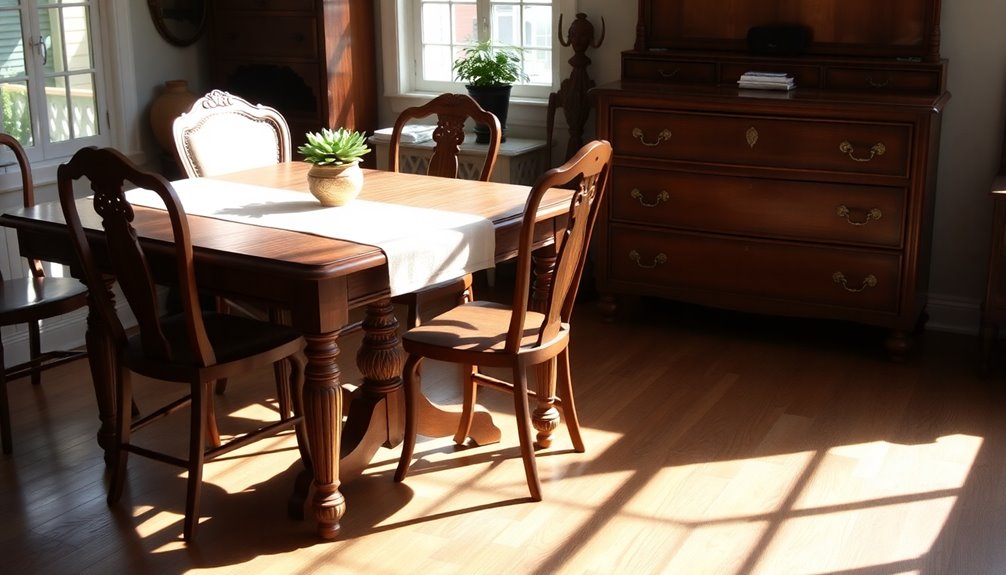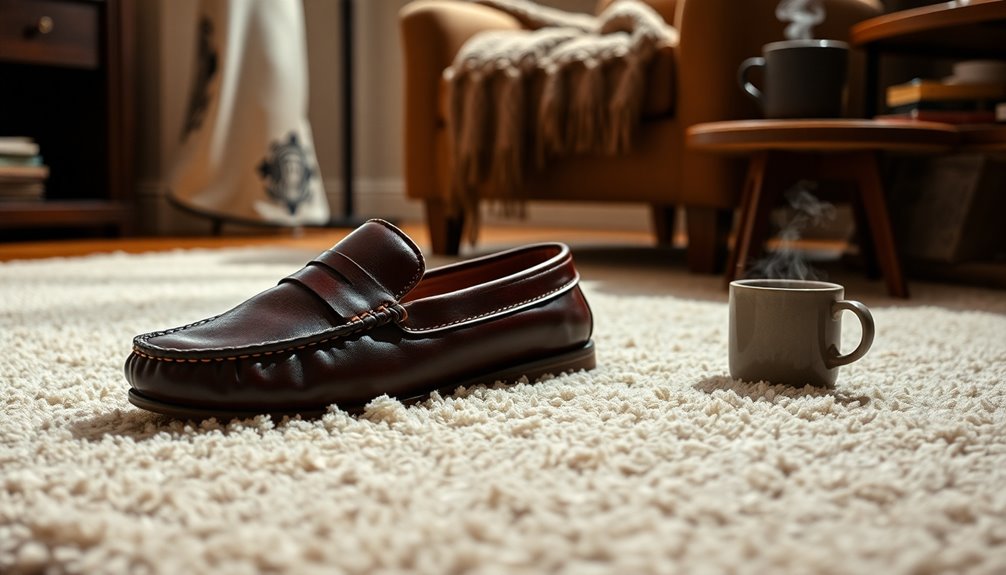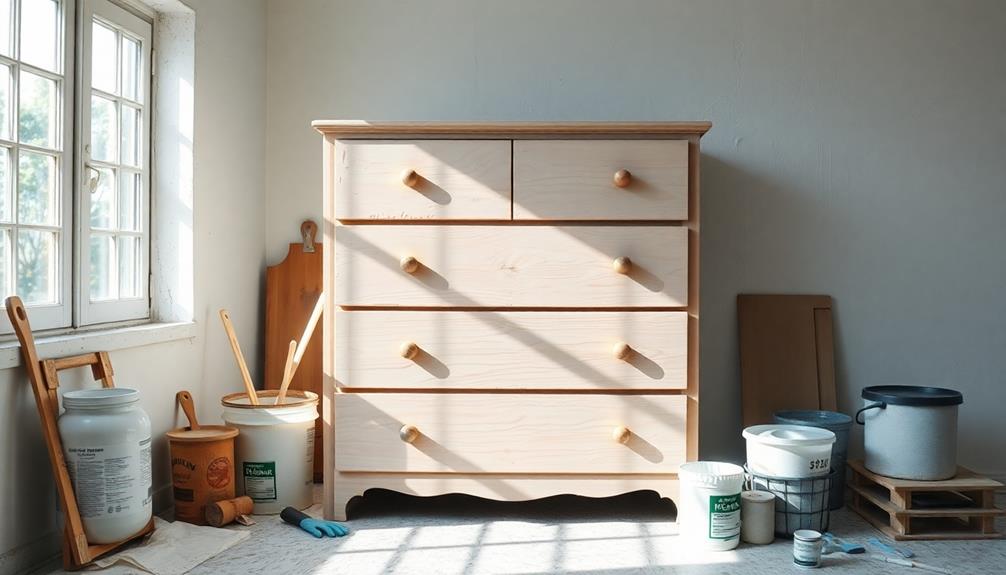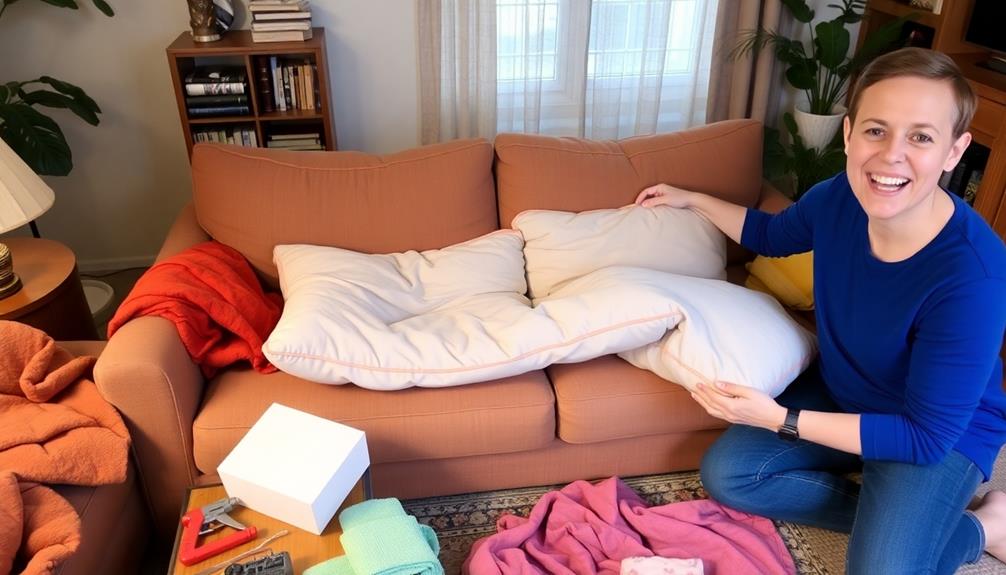To sell your old furniture effectively, start by choosing the right platform. Options like Facebook Marketplace or Craigslist are great for local sales, while platforms like eBay reach a broader audience. Price your items wisely by researching similar listings and considering their condition and material quality. Take quality photos in natural light, showcasing all angles and any unique features. Manage logistics by arranging safe pickup or delivery methods. Engage potential buyers with detailed listings and personal stories about your furniture. Get ready to attract buyers quickly, and you might find even more tips to enhance your selling strategy. Once you’ve crafted an appealing listing, remember to promptly respond to inquiries to keep potential buyers engaged. If you’re unsure about how to price your sofa, consider factors such as its age, brand, and condition, and ask for feedback from friends or online communities. Finally, be open to negotiation, as many buyers appreciate the opportunity to discuss pricing before making a purchase.
Key Takeaways
- Choose the right selling platform based on your furniture's quality and target audience to maximize visibility and sales potential.
- Research market prices on various platforms to price your furniture competitively according to its condition and material quality.
- Prepare your furniture by cleaning, repairing minor damages, and taking high-quality photos from multiple angles to attract buyers.
- Select appropriate delivery methods and packaging to ensure safe transport, and communicate clearly with buyers about logistics and pickup details.
- Create comprehensive listings with engaging stories, dimensions, and visuals to connect emotionally with potential buyers and enhance their buying experience.
Choosing the Right Selling Platform
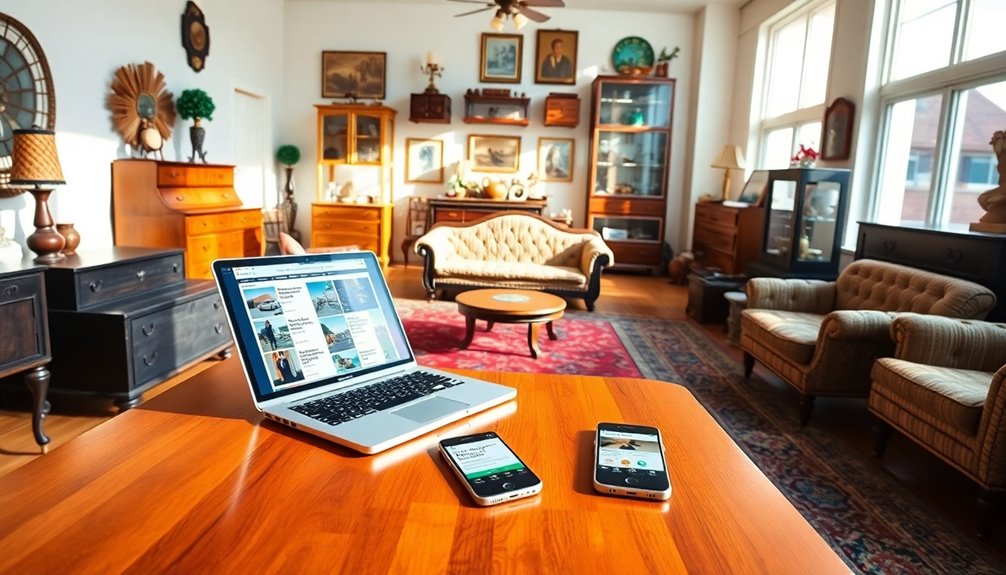
When it comes to selling old furniture, choosing the right platform is crucial for reaching potential buyers effectively. You've got a range of options, from broad marketplaces to specialized sites. For instance, Bonanza offers a simple storefront setup with no listing fees, integrating with Google for faster visibility. If you prefer local sales, OfferUp lets buyers make counter offers and communicates through an in-app chat.
Facebook Marketplace is another excellent choice for local reach, allowing you to list items with photos and descriptions without any fees. For a global audience, eBay's auction and direct purchase options can help you connect with buyers, though keep in mind the associated fees. Online marketplaces have expanded options for selling used goods, making it easier to find buyers for your furniture.
If your furniture's in good condition, consider AptDeco, which handles pick up and delivery for a fee. Chairish caters to vintage lovers, while 1stdibs is perfect for luxury items. For community-driven sales, check out Craigslist or Apartment Therapy Bazaar for local transactions.
Ultimately, your decision should align with your furniture's quality, the audience you want to reach, and how much effort you're willing to invest in the selling process.
Pricing Your Furniture Effectively

Choosing the right platform is just the beginning; pricing your furniture effectively can make all the difference in attracting buyers. Start by researching market prices on sites like Craigslist, Facebook Marketplace, and eBay. Compare similar items to determine a fair value. Don't forget to factor in the brand and model, as these can significantly impact resale prices.
Next, evaluate the condition of your furniture. Look for signs of wear, such as scratches or stains, and adjust your price accordingly. If repairs are needed, account for those costs. Cleanliness and overall appearance matter, too, so be sure to present your piece well. Additionally, consider the quality and rarity of the materials used, as this can also influence your pricing strategy.
Consider the long-term value and usage of your furniture. Calculate its cost per year based on how long you've had it and how frequently it was used. Assess materials and craftsmanship; high-quality materials like solid wood can boost value. Lastly, include labor costs for handmade items and factor in any overhead costs related to shipping.
Taking Quality Photos
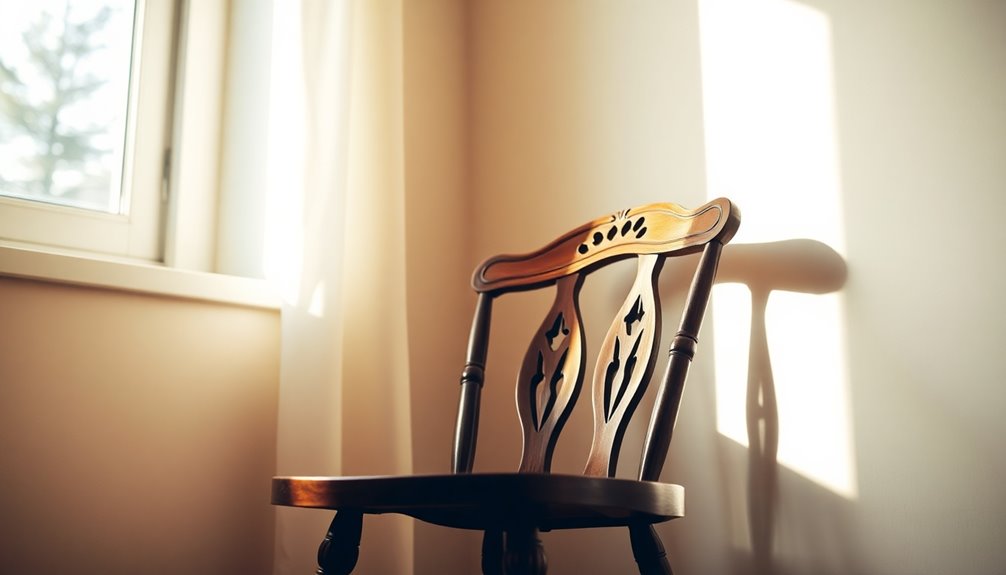
Capturing quality photos of your old furniture is crucial for attracting potential buyers. Start by using a plain background to avoid distractions and clear the area around the piece. Natural light is your best friend; it helps highlight details and the furniture's condition, so shoot during the day if you can. Remember to clean and maintain the furniture before photographing it to present it in the best light.
Take multiple angles, beginning with a straight-on shot that captures the entire piece. Include side, back, and close-up shots of unique features like fabric prints or hardware. Document all dimensions—height, width, and depth—so buyers know exactly what they're getting. Condition impacts pricing, so ensure your photos accurately reflect its state.
Highlight any unique characteristics and high-quality materials with close-ups. Be honest by documenting any damage or imperfections clearly. If there are intricate carvings or textures, make sure to showcase those.
Lastly, consider staging with minimal props to create context without distracting from the furniture itself. Avoid over-staging and take wide shots to show how the piece fits into a room. Quality photos can make all the difference in selling your furniture quickly and effectively.
Managing Logistics and Shipping
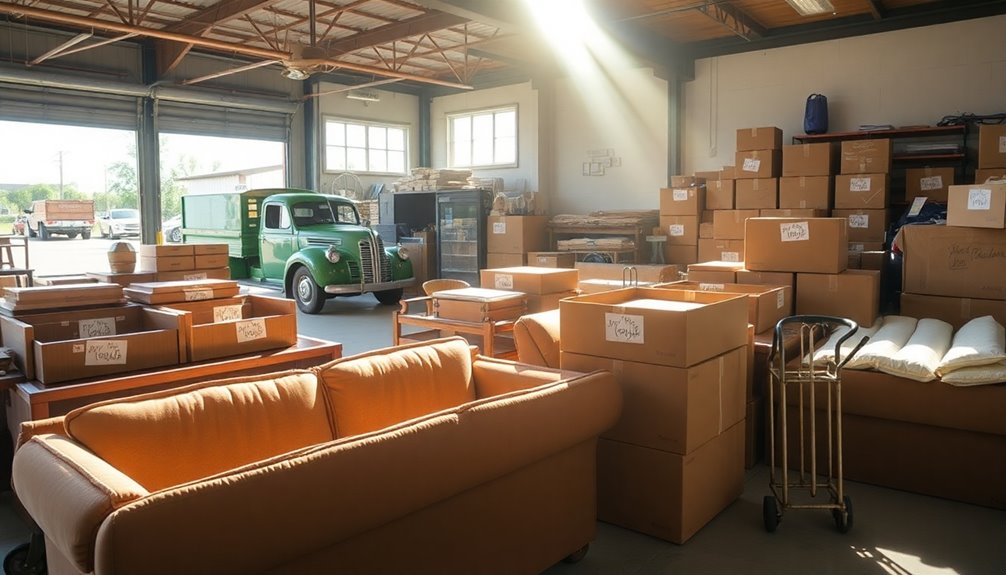
Managing logistics and shipping is essential for a smooth furniture sale. First, choose the right delivery method based on your item's size, weight, and the distance to the buyer. Ensure the transporter has the necessary equipment for large or bulky items. Be upfront about the delivery timeline to manage your buyer's expectations effectively.
Next, focus on packaging and preparation. Use protective materials like blankets and bubble wrap to shield fragile surfaces. Secure loose parts with straps or tape, and label any disassembled components clearly to avoid confusion. Accurate measurements and weight estimations will help you get precise shipping quotes. Additionally, providing thorough information upfront can significantly reduce return risk.
Clear communication is vital throughout the process. Confirm pickup details and share important information about the buyer's location, including any parking restrictions. Use messaging tools provided by shipping platforms to keep everyone updated on the delivery status.
Prioritize safety and convenience by arranging to meet buyers in public places or using professional transport services to avoid in-person exchanges. Opt for local buyers when possible to sidestep shipping hassles. Lastly, consider delivery insurance to protect against damage or loss during transit.
Engaging With Potential Buyers
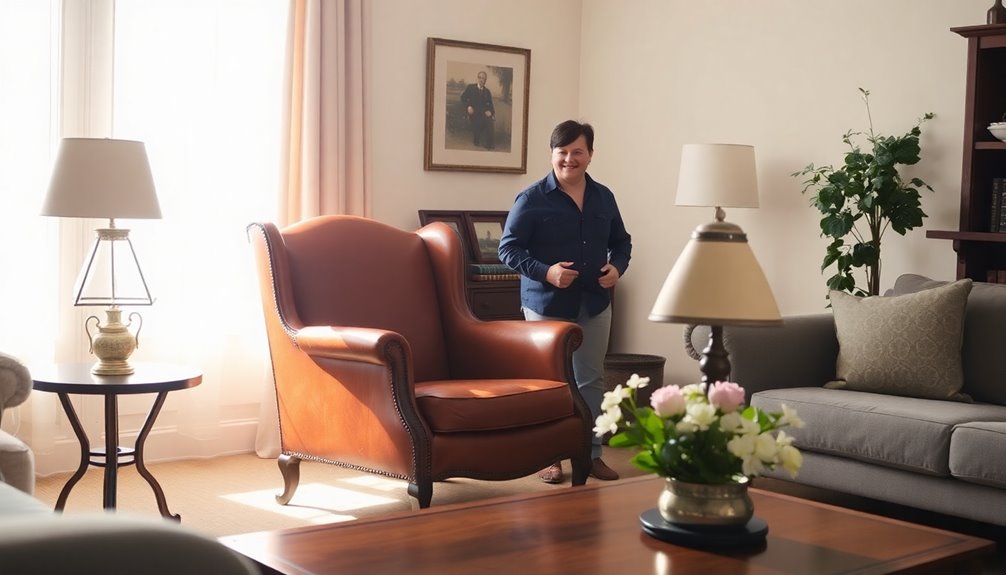
Once you've handled the logistics and shipping, the next step is to effectively engage with potential buyers. Start by crafting comprehensive listings that include detailed descriptions and high-quality images. Show your furniture from multiple angles and in different settings to recreate the offline shopping experience. Lifestyle images can help buyers visualize how your piece fits into their home.
Don't underestimate the power of storytelling. Share the history behind the furniture and highlight any sentimental value it may have. Incorporate customer testimonials to build trust and create emotional connections through social media and advertisements. Consider showing before and after images to illustrate the transformation of your furniture.
To enhance engagement, utilize visual and interactive content. High-quality photographs, 3D renders, and videos can make your listings stand out. You might even opt for infographics to convey additional information engagingly. Comprehensive product data is essential to ensure potential buyers have all the details they need to make an informed decision.
Lastly, offer enticing incentives like flexible payment options or free shipping to attract buyers. Real-time support through chat can also answer questions and reassure potential customers, making their buying experience seamless and enjoyable.
Preparing Your Furniture for Sale
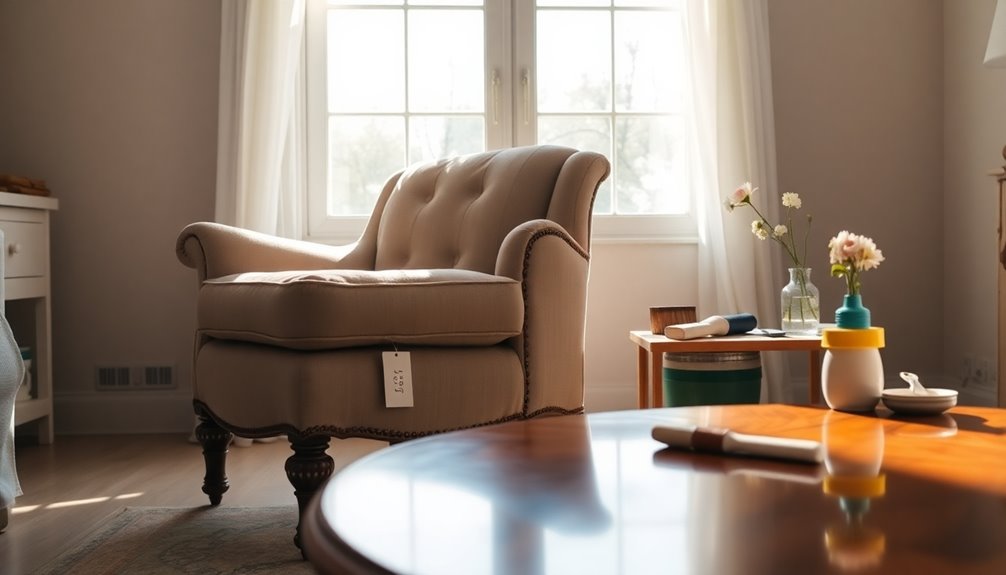
Before diving into the selling process, you need to prepare your furniture to attract potential buyers. Start by cleaning it thoroughly, using appropriate supplies for each material. For wooden pieces, use wood cleaner or polish, while upholstered items benefit from vacuuming and spot cleaning. Don't overlook minor repairs; tightening screws or fixing scratches can significantly boost your furniture's value. If stains are stubborn, consider hiring a professional cleaning service, as this can minimize bacteria and germs that may affect the item's appeal. Additionally, consider that there's a high demand for quality, gently-used furniture in Florida, which can drive interest in your items.
Next, assess the condition of your furniture honestly. Identify any damages, stains, or wear and tear, and note any unique features or high-quality materials that justify a higher price.
Once you've prepped your furniture, take high-quality photos. Use natural light and capture multiple angles to showcase its best features, including close-ups of any details or flaws. A simple background helps keep the focus on the furniture.
Finally, write a compelling description. Include dimensions, materials, brand, and any unique features, while mentioning any damages or repairs for transparency. Highlight the positives, and clearly state whether the buyer needs to arrange for pickup or if delivery is offered. This preparation sets the stage for a successful sale.
Frequently Asked Questions
What Are the Best Times to Sell Old Furniture?
The best times to sell old furniture are during peak seasons like spring and summer when home sales are high, or around the back-to-school period when people are looking to update their spaces. Consider the pre-holiday season too, as many prepare for entertaining guests. Avoid major holidays and the post-New Year slump, when people are less likely to make purchases. Timing your sale can really boost your chances of finding a buyer.
How Do I Handle Lowball Offers From Buyers?
When you receive a lowball offer, it's essential to stay calm and professional. Acknowledge the offer and express your appreciation. Avoid emotional reactions; instead, focus on the facts. Research the market to justify your price and respond promptly. You might counteroffer or highlight the item's value to negotiate better. If the offer doesn't meet your needs, be ready to walk away and maintain your boundaries.
Should I Accept Trades Instead of Cash?
You should consider accepting trades instead of cash if you're open to diverse transactions and want to attract a wider range of buyers. Trades can lead to customer satisfaction and loyalty, enhancing your selling experience. However, be cautious about the complexities in valuing items and potential logistical challenges. Weigh the benefits against the risks and uncertainties involved, and decide if this trade-off aligns with your selling goals and circumstances.
Can I Sell Furniture With Missing Parts?
Yes, you can sell furniture with missing parts, but it's important to be transparent about it. Missing parts can affect the price, so adjust accordingly. Highlight the furniture's overall condition and any repairs you've made. When listing it, include detailed descriptions and high-quality photos to attract potential buyers. Just remember to be honest about what's missing; this builds trust and can lead to a quicker sale.
How Do I Promote My Furniture Sale Online?
To promote your furniture sale online, start by using social media platforms like Facebook and Instagram to reach a wider audience. Create eye-catching ads and engage with potential buyers through posts and stories. Collaborate with influencers to showcase your pieces in their homes, building trust. Also, consider running limited-time promotions and offering flexible payment options to entice shoppers. Finally, keep your website user-friendly to ensure a smooth shopping experience.
Conclusion
Selling your old furniture can be a rewarding experience if you follow these steps. By choosing the right platform, pricing effectively, and showcasing your items with great photos, you'll attract eager buyers. Don't forget to manage logistics smoothly and engage with potential customers to build trust. With a little preparation, you can give your furniture a new life while making some extra cash. So, get started and watch your old pieces find new homes!
